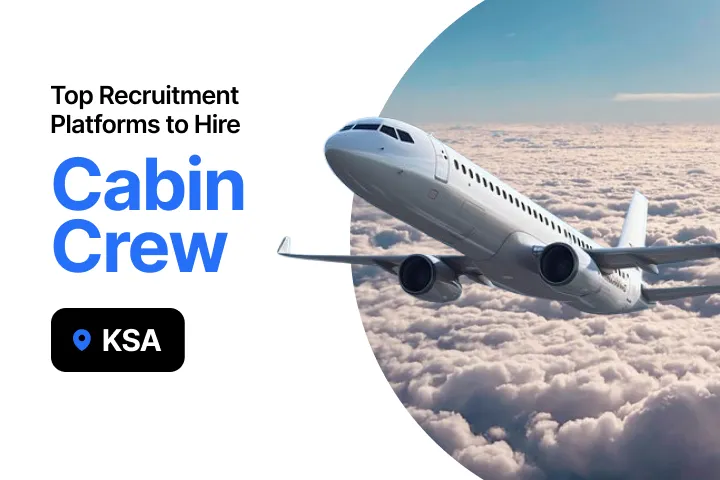Once you hire the best talent, a crucial undertaking for employers is to ensure the smooth transition of new employees into the company culture and functioning. It’s a systematic process, which must be done with patience and thought.
Fresh employees can easily feel out of place and overwhelmed in a novel environment. This is why we’ve compiled a list of full-proof onboarding practices to help you adjust new hires with ease. Use this opportunity to network, form meaningful bonds with your employees, and present yourself as a dependable and supportive boss.
What is Employee Onboarding?
Employee onboarding is the process by which new employees are integrated into the company structure. It’s conducted to guide the employees in adopting and fulfilling their new roles. Additionally, it is to introduce them to company policies, culture, values, and practices.
Though onboarding practices are designed to be generalized to all employees, each onboarding experience is specialized. All that matters is making sure that your employees are well-settled and familiarized to maximize productivity and collaboration.
Why is Employee Onboarding Important?
Employee onboarding is crucial to ensure that all new hires settle in well and get comfortable! Some of the most important benefits of effective employee onboarding are;
- Getting familiarised with the company policies,
- Getting comfortable with the new team,
- Understand the company’s expectations,
- Define personal goals,
- Start being productive!
Creative Onboarding Process Examples
It’s a misconception that onboarding processes are monotonous or dry. Many companies curate light-hearted and interactive activities to make a welcoming environment, which is a crucial onboarding practice.
An obvious option is to hold a company lunch to encourage rapport building. An informal, casual environment will promote getting to know your employees, therefore aiding the onboarding process.
Or, in the case of remote work, scheduling an icebreaker session can have similar effects. Building professional relationships with your employees, and vice versa will only strengthen the cooperative nature of your workplace. The stronger your team, the greater your production of innovative ideas and their efficient results.
Additionally, a fun way to officiate new employees is to make them feel like it. Sending out company swag can incentivize the onboarding process and make it more enjoyable. Who doesn’t enjoy receiving free merchandise?
Start your employee’s first day with a grand workplace tour. It’s always interesting to explore the area you will spend most of your time at. Allow them to interact with departments that are not just their own, to build an interconnected environment.
Another recommended strategy to ease in your employees is to implement experiential learning through scenario-based activities. Create a situation in which employees can play out their day-to-day roles or in crisis scenarios. This can give them a preview of what they can expect at the company.
Of course, employees will need policy and culture training. Generally, this is a more formal presentation to inform employees of company policies, so they act in compliance and do not violate anything, even on accident. It involves employee safety, benefits, company values, and expected behavior. To streamline this process, you can use the ai powerpoint maker to quickly generate clear, structured, and visually consistent training slides.
Also Read: Benefits of Payroll Management Software
7 Best Employee Onboarding Practices Checklist
1. Uncomplicate the Paperwork
With new employees comes the process of documenting their personal information, work history, and background checks. This can be rather overwhelming as it requires new hires to submit a substantial amount of meticulous detail about themselves.
Rather than submerging the new hires in complex and intricate paperwork immediately, opt for HR software that automates the process. Not only will this lighten the burden but push employees to interact with HR.
2. Regular Check-Ins
At the start, create a list of goals of what you expect from the onboarding process and your employees. It will prevent them from becoming confused, therefore stunting their acclimatization and growth as an employee.
Instead, use this onboarding practice and frequently track your employee’s growth while communicating with them. Be open to questions, be available, and reach out to them so that they feel included. Hold weekly meetings or surveys to get important feedback and improve the onboarding process accordingly.
3. Ease Them into Their Role
To avoid overwhelming your new hires, gradually ease them into their primary role. Let them acquaint themselves with the workflow and their responsibilities.
Once they are trained and equipped to efficiently take on more work, increase the tasks after every week or month. Hold some flexibility in deadlines during the adjustment period and utilize other onboarding practices to stimulate learning and employee growth.
4. Consult Senior Employees
Bridge the gap between the new employees and seasoned mentors by involving them in the process, and encouraging employee progress. Employees can shadow their seniors to understand their job nature and tasks better while interacting with different colleagues.
An important onboarding practice is to conduct role-based learning where the senior employees help the new hires practice implementing their skills in different job-related scenarios. Overall, the presence of senior staff has the potential to make new hires feel important and motivated.
5. The Buddy System
Assign a pre-employed colleague to each new hire. They’ll oversee the new employee’s adjustment, show them around the workplace, educate them on company policy, and be their friend. New hires mustn’t feel like fish-out-of-water, but individuals who are welcomed. It promotes employee satisfaction which is ultimately necessary for productivity.
6. Trust the Process
New hires work equally hard to transition from university or another company to the workplace. Therefore, onboarding becomes a joint effort between employers and new employees to ensure a smooth process.
However, it is an intricate phase that takes an indefinite amount of time to complete. It is crucial to be patient while applying these onboarding practices. Let them learn the company values and functions at their own pace and support them during it.
It could take a few weeks, months, or a year. The important bit is to work together to transform new hires into productive and motivated employees.
7. Reboarding
This practice applies more to long-term employees who have rejoined after a break or have received a promotion. Employees that are starting a new position at the company need a personalized onboarding process that leaves them well-adjusted. Though it’s a little different from the typical process, it still aims to reassure, reaffirm, and help employee navigate their new role until they are high-functioning and confident.
Frequently Asked Questions
Q) What are the 4 onboarding phases?
Preboarding: Onboarding practices start before the first workday. During this phase, employees get a rundown of daily tasks, expectations, company policies, and more. It’s a great time for introductions and creating a good first impression.
Onboarding: Of course, this is the inaugural phase of new hires. Employees experience several onboarding practices to settle in and intermingle with other departments, executive staff, and more.
Role-Based and Skill Training: Employee training is conducted through shadowing, workshops, and speaker sessions. It is unfair to assume that new hires will know exactly how to work in a new role. Thus, in this phase, set clear goals for your employees and encourage their curiosity and questions.
Successful Adjustment: Once new employees create interpersonal bonds with their colleagues and efficiently implement their skills in the new job, they are well into transitioning.
Q) What is a 30-60-90 day plan?
This is a goal-setting plan, outlining objectives for the first three months of onboarding. It involves training, scenario-based learning, and mastery milestones dedicated to each month.
Q) Why centralized email signatures are an important part of the onboarding process?
Email signatures inform the new employees of the name, delegation, and contact information of the co-worker they are engaging with. It prevents information overload, making it easier for employees to remember new colleagues.




